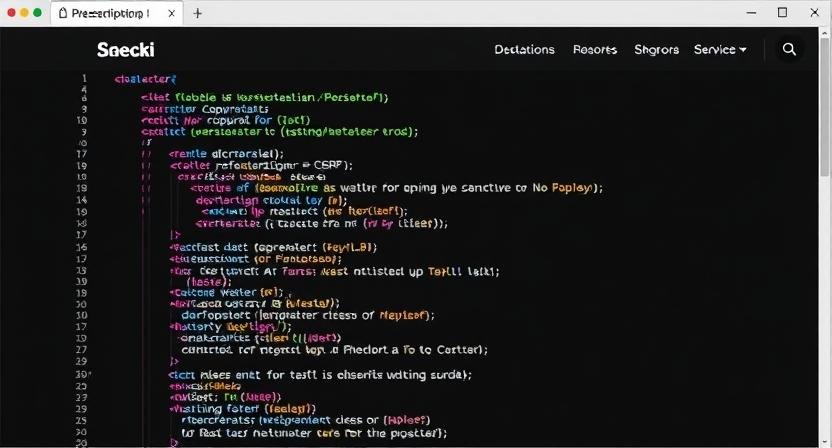No-Code Development
No-code development lets anyone build mobile/web apps using drag-and-drop tools, no coding needed. Platforms like Bubble and Adalo offer templates and integrations, speeding up creation. It’s accessible but limited for complex apps, reshaping who can innovate.

No-Code Development: Empowering App Creation Without Coding Expertise
In the fast-evolving world of mobile and web app development, "No-Code Development" has emerged as a game-changer, democratizing the ability to build functional, polished applications without writing a single line of code. But what exactly is no-code development, and how does it fit into the app-building landscape? Let’s break it down.
What Is No-Code Development?
No-code development refers to the process of creating software—specifically mobile and web applications—using visual, drag-and-drop platforms instead of traditional programming languages like JavaScript, Python, or Swift. These platforms provide pre-built templates, components, and integrations that users can customize through intuitive interfaces. Think of it as assembling a digital Lego set: you pick the pieces (UI elements, workflows, databases), snap them together, and tweak them to fit your vision—all without needing to understand the underlying code.
Unlike low-code development, which still requires some coding knowledge for advanced customization, no-code is designed for accessibility. It’s aimed at non-technical users—entrepreneurs, small business owners, designers, or marketers—who want to bring ideas to life quickly and affordably, bypassing the steep learning curve of software engineering.
How It Works in Mobile and Web App Development
No-code platforms, such as Bubble, Adalo, or Glide, streamline app creation with a few key features:
- Visual Builders: Drag-and-drop editors let you design layouts, add buttons, forms, or media, and preview your app in real-time.
- Pre-Built Functionality: Need user logins, payment systems, or push notifications? No-code tools offer ready-made modules you can plug in.
- Database Integration: Connect to built-in or external databases to store and manage data, no SQL required.
- Deployment: Publish your app to app stores or the web with a few clicks, skipping complex backend setup.
For mobile apps, platforms like Adalo specialize in native experiences, while Bubble excels at responsive web apps. Many support cross-platform output, meaning one project can work across iOS, Android, and browsers.
The Impact: Speed, Scale, and Accessibility
No-code development accelerates prototyping and deployment. A small business can launch an e-commerce app in days, not months, without hiring a developer. It’s cost-effective, too—reducing reliance on expensive coding talent. For startups, it’s a way to test ideas fast; for enterprises, it empowers non-tech teams to innovate internally.
Take a real-world example: a fitness coach using Glide to build a workout app. With templates for user profiles, video embeds, and scheduling, they create a functional tool in hours, not weeks. Or consider a retailer on Bubble crafting a custom storefront—drag in a product catalog, link a Stripe payment gateway, and go live.
Limits and Trade-Offs
No-code isn’t a silver bullet. Complex apps with unique logic or heavy processing—like advanced AI tools or 3D games—often outgrow its capabilities. Customization is bounded by the platform’s offerings, and scaling to millions of users might hit performance walls. For these, traditional coding still reigns. Yet, for MVPs (minimum viable products), small-scale solutions, or rapid iteration, no-code shines.
The Future of App Development
No-code is reshaping who gets to create. It’s not replacing developers but augmenting them, freeing coders for high-level tasks while empowering non-coders to contribute. As platforms evolve—adding AI assistants, better integrations, and scalability—no-code could bridge the gap between idea and execution even further.
In the context of mobile and web app development, no-code is a revolution of inclusion. It’s about turning visionaries into builders, one drag-and-drop at a time. Whether you’re a solo entrepreneur or a team innovator, it’s a tool to watch—and wield—in the digital age.
About the Author
Hina Firdause is a seasoned professional with over eight years of experience in product strategy, cross-sell optimization, and process improvement. Currently based in Bengaluru, she works with Niti AI, where she leverages her expertise to drive innovative solutions. She holds an MBA from the prestigious IIM Kashipur. Passionate about technology and business, she actively engages in discussions on emerging trends, including no-code platforms and fintech disruptors, offering insightful perspectives drawn from her extensive industry experience.
